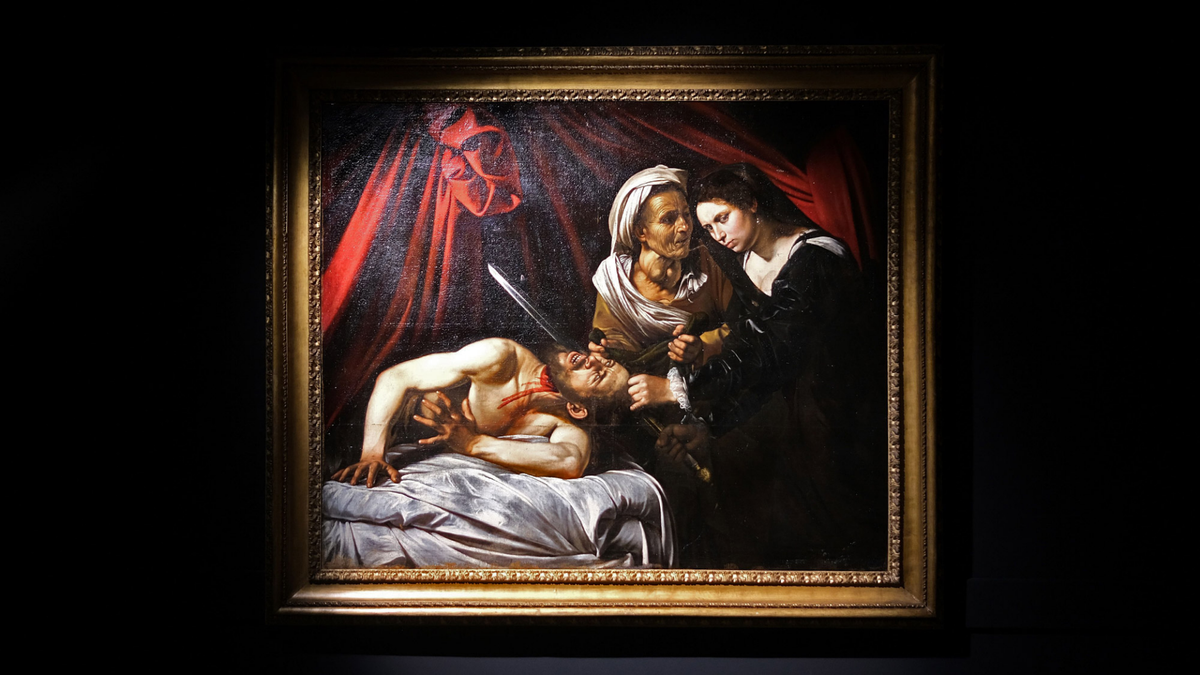
A painting believed by some experts to be Caravaggio's "Judith Beheading Holofernes" is pictured at the Marc Labarbe auction house on June 15, 2019, in Toulouse, France. (Eric Cabanis/AFP/Getty)
A previously unknown Caravaggio painting that was found just a few years ago was expected to fetch up to $170 million at auction this week — but it never made it to the auction block.
Instead, an unnamed buyer quietly purchased the painting yesterday (June 25) before the June 27 auction in Toulouse, France, could take place, The Guardian reported.
The sumptuously painted canvas shows the grisly biblical scene of Judith — a Jewish woman — beheading the Assyrian general Holofernes, to save her people. Caravaggio is already known for immortalizing this gruesome tale in the painting "Judith and Holofernes," which he finished around 1598 or 1599. [30 of the World's Most Valuable Treasures That Are Still Missing]
But is this alternate version of the bloody beheading a genuine Caravaggio? Several experts have doubts, according to The Guardian.
More From LiveScience
The "lost" Caravaggio surfaced in a Toulouse home in April 2014, CNN reported that year. After homeowners found the dusty, water-stained canvas in the attic during a renovation, they contacted a friend named Marc Labarbe, who was also a fine art auctioneer.
Labarbe then sent a photo of the painting to Eric Turquin, a well-respected Parisian art appraiser and Old Masters expert, for analysis; two years later, Turquin declared that the artwork had been painted by Michelangelo Merisi da Caravaggio, Reuters reported in 2016.
"A painter is like us — he has tics. And you have all the tics of Caravaggio in this," Turquin told Reuters TV. What's more, Caravaggio is thought to have created another painting of Judith and Holofernes in 1606, according to records dating to 400 years ago, Turquin told The Guardian.
X-rays and cleaning revealed that the attic painting underwent many revisions with "lots of retouching," which experts see as a sign that a painting is not a forgery or copy, Turquin said. But several experts dispute the painting's provenance, Richard Spear, an Italian Baroque expert at Princeton University, told The Art Newspaper.
Some suggest that the painting is the work of Flemish artist Louis Finson, a contemporary of Caravaggio. Others propose that Finson completed the painting that Caravaggio left unfinished in 1607, after he fled Malta to escape a death sentence for murdering a man in a street brawl, according to The Guardian.
Auction representatives declined to disclose the buyer's identity or the painting's selling price, but the artwork is bound for an unnamed "great museum" outside of France, where it will be on display to the public, Reuters reported.
- 9 Famous Art Forgers
- 11 Hidden Secrets in Famous Works of Art
- 7 Biblical Artifacts That Will Probably Never Be Found
Originally published on Live Science.
